On 17, Sep 2015 | In News, REACH | By Alisa Maier
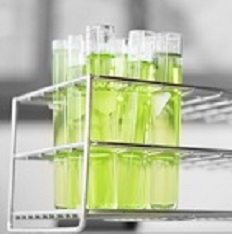 Das lang erwartete Urteil hinsichtlich der Interpretation der Bezugsgröße von 0,1 Massenprozent von besonders besorgniserregenden Stoffen in Erzeugnissen (SVHC) wurde vom Europäischen Gerichtshof am 10. September 2015 verkündet.
Das lang erwartete Urteil hinsichtlich der Interpretation der Bezugsgröße von 0,1 Massenprozent von besonders besorgniserregenden Stoffen in Erzeugnissen (SVHC) wurde vom Europäischen Gerichtshof am 10. September 2015 verkündet.
Artikel 33 der REACH Verordnung Nr. 1907/2006 in geänderter Fassung ist wie folgt auszulegen: Der Lieferant eines Produkts, bei dem ein oder mehrere Erzeugnisse, aus denen es sich zusammensetzt, einen gemäß Art. 59 Abs. 1 der Verordnung ermittelten besonders besorgniserregenden Stoff in einer Konzentration von mehr als 0,1 Massenprozent (w/w) je Erzeugnis enthalten, muss den Abnehmer und, auf entsprechendes Ersuchen, den Verbraucher über das Vorhandensein dieses Stoffes zu informieren, indem er ihnen mindestens den Namen des betreffenden Stoffes angibt.
Die Bezugsgröße von 0,1 % ist demnach nicht länger auf Basis des Gesamterzeugnisses zu berechnen, sondern für jedes darin enthaltene Teilerzeugnis. Lieferanten von Erzeugnissen müssen nun ihr System zur Einhaltung der Konformität (Kommunikation, Datenmanagement etc.) im Hinblick auf die zusätzlichen Informationsverpflichtungen nach REACH Artikel 33 überprüfen und gegebenenfalls anpassen.
1cc unterstützt Unternehmen bei der Umsetzung und Durchführung der Informationspflichten zu SVHCs sowie zu weiteren Verpflichtungen auf Grundlage der REACH Verordnung
On 20, Jul 2015 | In News, REACH | By Alisa Maier
 Nanomaterialien finden sich immer häufiger in Kosmetika, Pharmazeutika, Farben sowie weiteren Produkten. Nun hat die OECD eine 7-jährige umfassende Studie zu Nanomaterialien abgeschlossen. Die neuen Erkenntnisse sollen in die aktuellen Test Guidelines für Nanomaterialien einfließen.
Nanomaterialien finden sich immer häufiger in Kosmetika, Pharmazeutika, Farben sowie weiteren Produkten. Nun hat die OECD eine 7-jährige umfassende Studie zu Nanomaterialien abgeschlossen. Die neuen Erkenntnisse sollen in die aktuellen Test Guidelines für Nanomaterialien einfließen.
In der EU fallen Nanomaterialien grundsätzlich unter die Bestimmungen der REACH- und CLP-Verordnung, sind dort aber bisher nicht speziell reguliert. Die Europäische Chemikalienbehörde (ECHA) untersucht aber schon seit längerem, ob eine separate Regelung zum Schutz der potentiellen Gefahren von Nano-Materialien notwendig ist. Aktuell hat die ECHA nun dazu aufgerufen, dass Registranten die neu verfügbaren Daten in ihre Registrierungsdossiers aufnehmen.
Französische Sonderregelung für Nanomaterialien
In Frankreich gibt es bereits seit 2013 besondere Registrierungs- und Berichtspflichten für Nanomaterialien. Ab einer jährlichen Menge von 100 g müssen Hersteller, Importeure und Distributoren der zuständigen Behörde ANSES verschiedene Informationen melden.
In Frankreich hofft man, dass andere EU-Mitgliedstaaten dem französischen Beispiel folgen werden und nennt Länder wie Italien, Belgien und Dänemark. Viele Informationen zu der gesetzlichen Regelung sind nur in französischer Sprache erhältlich. Unternehmen, die eine Notifizierung in Frankreich durchführen müssen, unterstützt die 1cc gerne.
On 23, Jun 2015 | In News, REACH | By Alisa Maier
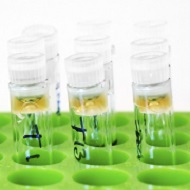 The European Chemicals Agency (ECHA) has added two new substances of very high concern (SVHC) to the REACH Candidate List. The Candidate List now contains 163 substances.
The European Chemicals Agency (ECHA) has added two new substances of very high concern (SVHC) to the REACH Candidate List. The Candidate List now contains 163 substances.
The two new entries refer to:
1,2-benzenedicarboxylic acid, di-C6-10-alkyl esters; 1,2-benzenedicarboxylic acid, mixed decyl and hexyl and octyl diesters with ≥ 0.3% of dihexyl phthalate (EC No. 201-559-5) which were added to the list due to their reproductive toxicity properties . These substances are used for example as plasticisers and lubricants, including use in adhesives, coatings, building material, cable compounding, polymer foils, PVC compounds and artist supply (e.g. modelling clay and finger paints).
5-sec-butyl-2-(2,4-dimethylcyclohex-3-en-1-yl)-5-methyl-1,3-dioxane [1], 5-sec-butyl-2-(4,6-dimethylcyclohex-3-en-1-yl)-5-methyl-1,3-dioxane [2] [covering any of the individual stereoisomers of [1] and [2] or any combination thereof]: This second SVHC has been added as a group entry with very persistent and very bioaccumulative properties. This group of substances covers, for example, the product with the trade name „karanal“. Public information sources indicate that karanal is mainly used as a fragrance ingredient.
More information on http://echa.europa.eu/view-article/-/journal_content/title/two-new-substances-of-very-high-concern-svhcs-added-to-the-candidate-list
On 28, Apr 2015 | In News, REACH | By Alisa Maier
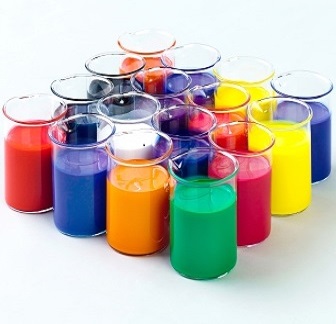 Article 33 of the REACH Regulation requires manufactures and importers of articles containing more than 0.1 percent of an SVHC (Substance of Very High Concern) to pass on this information within the distribution chain.
Article 33 of the REACH Regulation requires manufactures and importers of articles containing more than 0.1 percent of an SVHC (Substance of Very High Concern) to pass on this information within the distribution chain.
According to Article 7 (2), ECHA has to be notified accordingly. The European Court of Justice (EJC) is currently in the process of clarifying whether the 0.1 percent threshold refers to the entire weight of the article or to each component (legal proceeding C-106/14).
Whilst according to the guidance of the EU Commission and ECHA, the 0.1 percent threshold should refer to the entire weight of an article, six EU Member States – Austria, Belgium, Denmark, Germany, France and Sweden – and Norway followed the interpretation according to the rule „once an article, is always an article“. This means that the 0.1 percent threshold should be based on the weight of the single component of an article.
- In the beginning of 2015 the Advocate General of the ECJ has published her opinion on this matter, basically supporting the interpretation of the six EU Member States.
Art. 7 (2): The producer of an entire article consisting of component articles produced by other manufacturers is required to notify ECHA if a SVHC is present in the entire article above a concentration of 0.1 percent. However, the importer of an entire article consisting of component articles is required to notify ECHA both if a SVHC is present in the entire article above a concentration of 0.1 percent and if it is present in a component article above a concentration of 0.1 percent.
- Art. 33: The supplier of an entire article consisting of component articles shall be required to provide information within the distribution chain if a SVHC is present in a component article above a concentration of 0.1% and relevant information is available to the supplier.
The final decision of the ECJ is expected in the course of this year.
On 17, Dez 2014 | In News, REACH | By Alisa Maier
REACH: 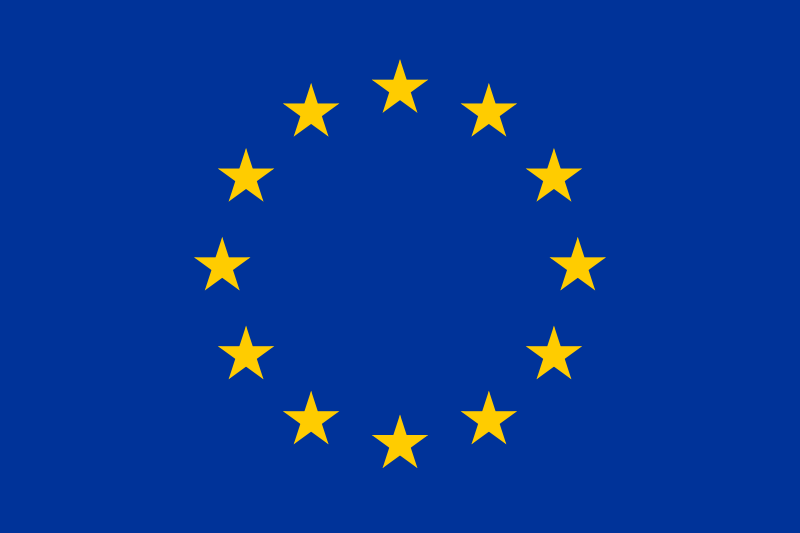 Today, six new SVHCs have been added to the REACH Candidate List by ECHA; and one existing entry has been updated.
Today, six new SVHCs have been added to the REACH Candidate List by ECHA; and one existing entry has been updated.
Cadmium fluoride and cadmium sulphate are added to the Candidate List as being “Carcinogenic”, “Mutagenic”, “Toxic for reproduction” and are also identified as being of „Equivalent level of concern based on probable serious effects to human health“ (specifically due to the effects on kidney and bone).
Two benzotriazole substances (UV-320 and UV-328) are identified as being “persistent bioaccumulative and toxic and very persistent and very bioaccumulative (PBT/vPvB)”.
Two further substances, DOTE and the reaction mass of DOTE and MOTE are identified as being “Toxic for reproduction”.
The Member State Committee also unanimously agreed that bis(2-ethylhexyl) phthalate (DEHP) meets the criteria for identification as an SVHC under Article 57(f) due to its endocrine disrupting properties causing probable serious effects to the environment. As DEHP is already included in the Candidate List based on its toxic for reproduction properties, this entry will be updated to address the additional reason for inclusion.
As DEHP is already listed in the Authorisation List (Annex XIV), companies that were initially exempt from the authorisation requirement may, in the future, be subject to authorisation. However, before this could happen, the European Commission would need to amend the corresponding entry for DEHP in the Authorisation List.
On 01, Okt 2014 | In News, REACH | By Alisa Maier
 The European Commission issued on 9 August 2014 its first decision to authorise a specific use of plasticiser Bis(2-ethylhexyl) phthalate (DEHP) during the diffusion bonding and manufacture of aero engine fan blades.
The European Commission issued on 9 August 2014 its first decision to authorise a specific use of plasticiser Bis(2-ethylhexyl) phthalate (DEHP) during the diffusion bonding and manufacture of aero engine fan blades.
According to Decision 2014/C 260/10 the risk is adequately controlled in accordance with Article 60(2) of Regulation (EC) No 1907/2006. Furthermore, there are no suitable alternatives at present and search for technically feasible alternatives is ongoing under a 5 to 10 year research programme. The authorisation is valid until February 21, 2022. Holder of the authorisation is Rolls-Royce plc in the United Kingdom.
On 29, Sep 2014 | In News, REACH | By Alisa Maier
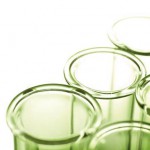 Nine new substances were added to the Authorisation List (Annex XIV) of the REACH Regulation on August 19, 2014. These Substances of Very High Concern (SVHC) had been prioritised by ECHA in January 2013 and are used, for instance, as solvents, anti-corrosion or curing agents.
Nine new substances were added to the Authorisation List (Annex XIV) of the REACH Regulation on August 19, 2014. These Substances of Very High Concern (SVHC) had been prioritised by ECHA in January 2013 and are used, for instance, as solvents, anti-corrosion or curing agents.
The sunset dates range from August 22, 2017 to January 22, 2019. If manufacturers want to use one of the newly added substances after the sunset date, they have to apply for an authorization 18 months before the respective sunset date.
With these nine new entries, the Authorisation List currently contains a total of 31 Substances of Very High Concern.
Link to the news substances as listed in the Annex of Commission Regulation (EU) No. 895/2014.
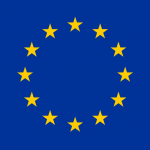 The European Chemicals Agency (ECHA) has added four new substances to the Candidate List. The Candidate List contains now 155 substances. Among the new substances of very high concern (SVHC) are:
The European Chemicals Agency (ECHA) has added four new substances to the Candidate List. The Candidate List contains now 155 substances. Among the new substances of very high concern (SVHC) are:
| Substance name |
EC number |
CAS number |
Comment/Use |
| |
|
|
|
| 1,2-Benzenedicarboxylic acid, dihexyl ester, branched and linear |
271-093-5
|
68515-50-4
|
Use as substitute for softener |
| Sodium perborate; perboric acid, sodium salt |
239-172-9;
234-390-0
|
–
|
Use as bleaching agent in detergent industry |
| Sodium peroxometaborate |
231-556-4
|
7632-04-4
|
Use in detergents |
| Cadmium chloride |
233-296-7
|
10108-64-2
|
Use in electroplating |
As these four substances are now Candidate Substances under REACH, information requirements for Candidate Substances in articles according to Article 33 apply immediately. If applicable, manufacturers and importers have to follow the requirements for notification according to article 7.2 within 6 months, which means until December 16, 2014.
On 03, Mrz 2014 | In News, REACH | By Alisa Maier
On December 16, 2013, the European Chemicals Agency (ECHA) has included seven new substances in the REACH candidate list which now contains 151 substances. For the seven new and the previously identified candidate substances, information requirements according to REACH article 7 and 33 are obligatory:
If a candidate substance is present in an article in a concentration above 0,1 mass percent, suppliers of this article – manufacturer, importer or distributor- have to inform their direct customers. In addition, manufacturers and importers of articles have to notify ECHA about the substance according to article 7, if
- a candidate substance is present in the article above 0,1 mass percent, and
- the total amount of this substance in the article totals more than 1 ton/year, and
- the substance has not been registered at ECHA for that use.
If all three criteria are met, the manufacturer or importer has to submit a notification to ECHA within the following six months after the most recent update of the candidate list. For the above mentioned seven new candidate substances, the deadline is June 16, 2014.
Link to candidate list: http://echa.europa.eu/de/candidate-list-table
Further substances are expected to be put on the list until summer. 22 substances out of this list are or will be subject to authorization as they have been added to REACH Annex XIV already.










